Elephant sanctuaries are one of Thailand’s biggest tourist attractions. You’d be hard pressed not to see advertisements flooding tour operator shops anywhere in the country. Chiang Mai seems to be an epicentre for sanctuaries. In fact, it is impossible to walk more than a block or two in Chiang Mai’s old city neighbourhood without seeing advertisements for “ethical elephant sanctuaries”.
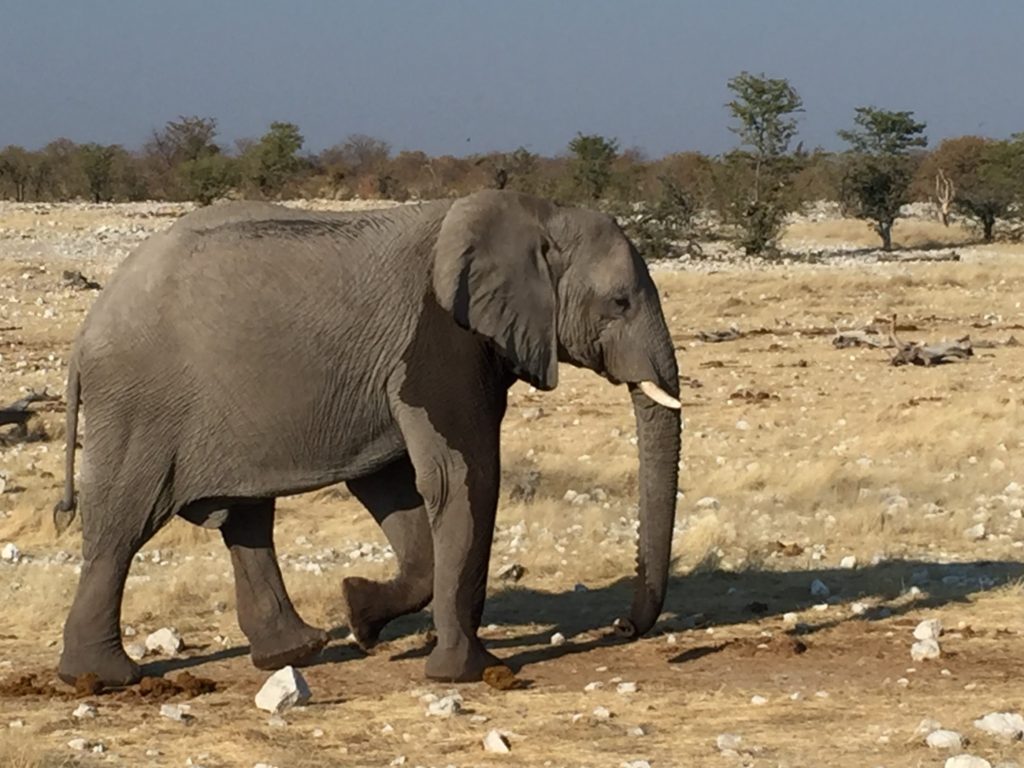
This raised a lot of questions in my mind.
- Why are there so many sanctuaries needed?
- If they are advertised as “volunteer experiences” why does it cost a significant amount of money to visit?
- Why would any of these companies care about the ethical treatment and rehabilitation of elephants if they are making so much money?
- Are the prominent “no riding” and “no bull hooks” signs simply a marketing ploy that panders to the good intentions of tourists?
I decided to investigate these questions to answer my final question: are elephant sanctuaries actually ethical?
Look, I have no problem with tour companies. They need to make a living like the rest of us. If people are willing to spend money for a product or service, that creates a space in the marketplace for it to exist. However, what I do have a problem with is false advertising and misleading claims.
One of the first red flags I came across was an advertisement for an elephant “sanctuary” claiming to be ethical because they do not allow riding. On the SAME advertisement for the SAME sanctuary, it offered tours that allowed riding. That was certainly a big head scratcher.
Below is what I learned about elephant sanctuaries, which will hopefully shed some light on this massive tourist enterprise. All sources are listed at the end of the article. In addition, the photos of advertisements in this post are merely to showcase the marketing styles of sanctuaries. We do not endorse nor oppose any of the businesses shown.
What is an elephant sanctuary?
Depending on the company or you talk to, this definition can be quite different. Most often, the elephant sanctuaries that are advertised in Chiang Mai market themselves as a safe haven for abused elephants rescued from severely cruel conditions. Most claim their goal is to rehabilitate the elephants to send them back to the wild, while others are simply retirement homes for elephants who would be at danger if returned to the wild.

The vast majority proudly state they do not allow riding, as this operation has been deemed inhumane by elephant activists worldwide. They also claim to not use bullhooks (a device that allows the keeper to control the elephant and remind them who is in charge). Most will include the word “ethical” in their description and often display pictures of bikini-clad travellers in their twenties having a great time frolicking in the water beside an elephant.
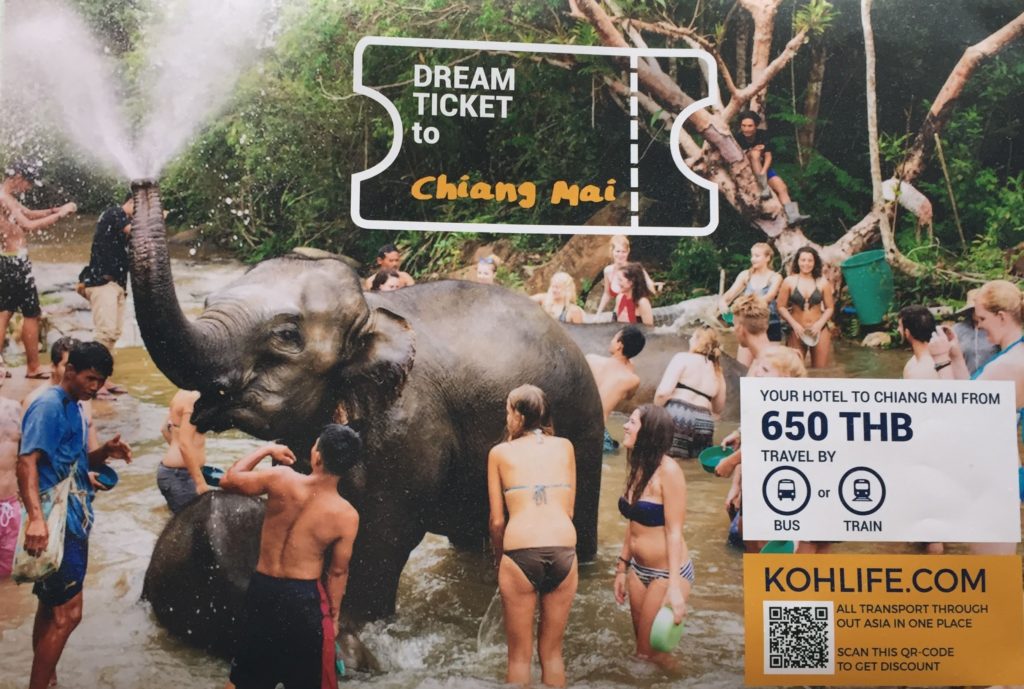
What does a tourist experience involve?
Tourists can visit these sanctuaries, with a typical day at most of them involving getting up close to the elephants, feeding them, learning their name and history (where they were rescued from), taking them for a walk, bathing/cleaning them, and of course taking dozens of selfies to post on social media. It’s no wonder tourists rave about the experience and pay money to do this. Who wouldn’t want to get up close to elephants, while being told that you are helping to give these elephants a happier life?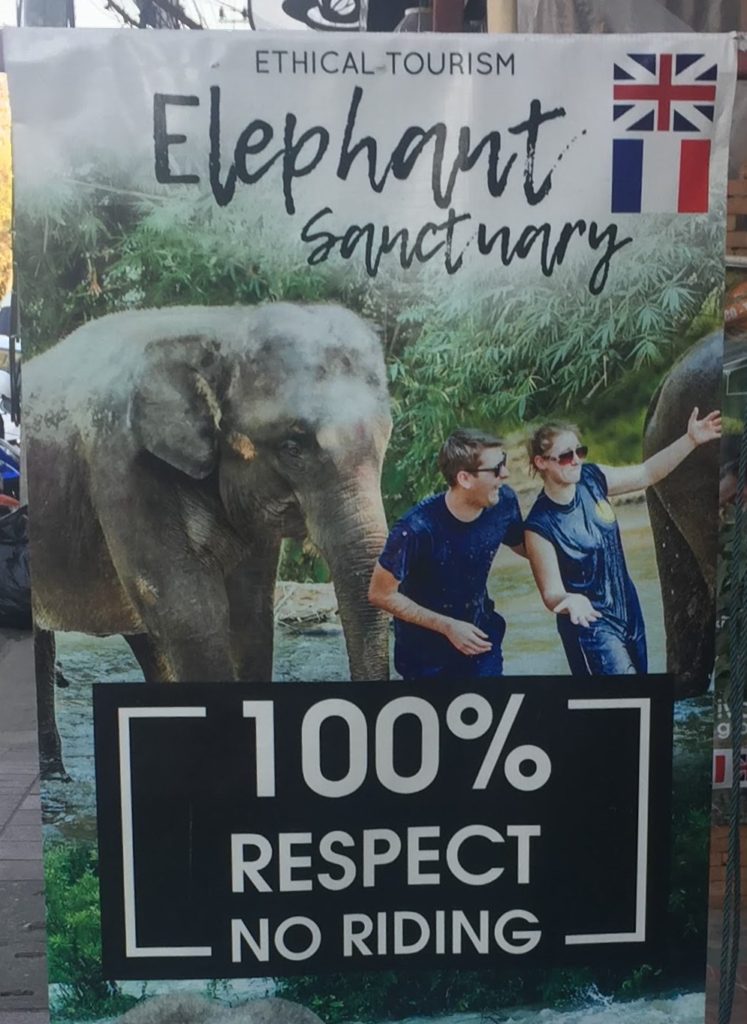
Are the elephants actually living a happier life?
Without hesitation, every elephant sanctuary will tell you the answer to this question is yes. Certainly, their life in the sanctuary is better than being chained, beaten and trained to perform tricks like playing basketball, painting pictures or giving rides to eager tourists.
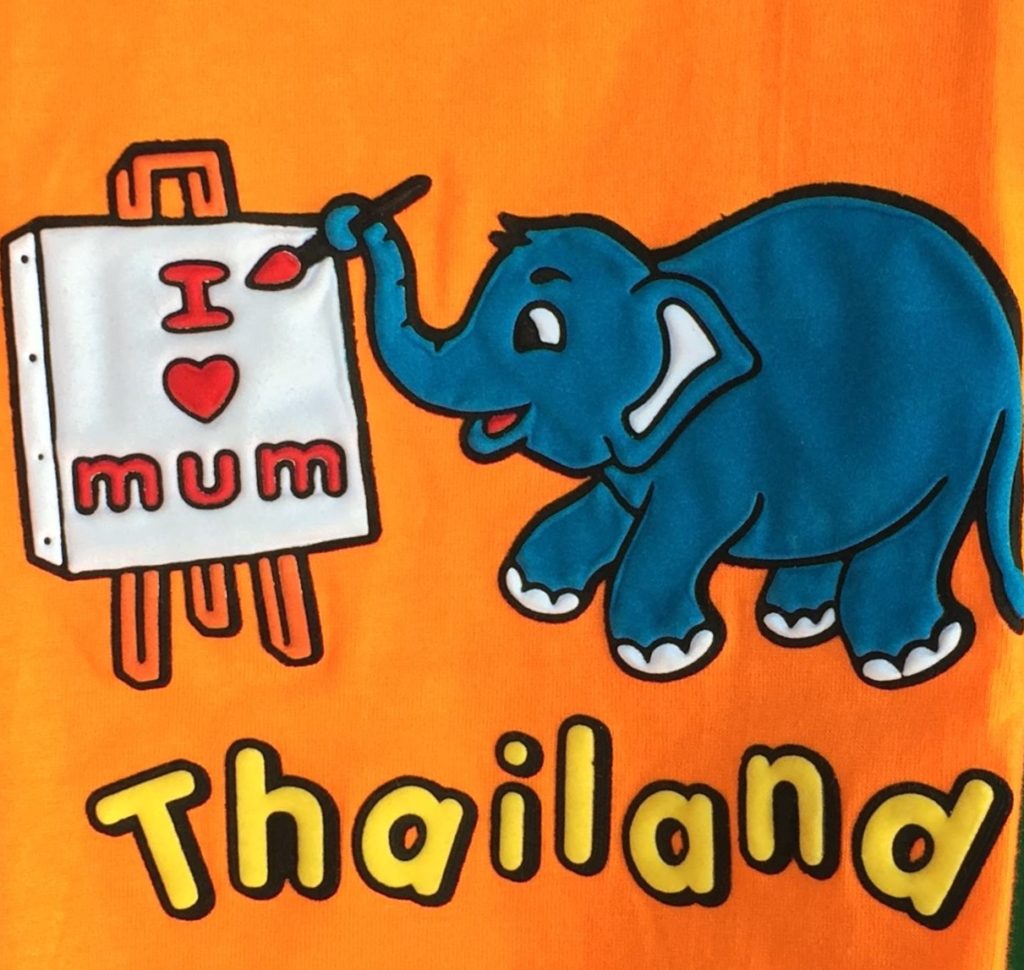
However, are they actually happy? According to Maria Mossman, founder of non-profit group Action for Elephants UK,
“real sanctuaries will limit contact with the elephants, with visitors observing them from a distance the majority of the time.”
She goes on to to warn people to avoid any place offering riding or bathing with elephants.
“In some places this means a lot of people every hour with the elephants in the water – it’s not natural for an elephant to be in the water all day with lots of people climbing all over them.”
Although I did not personally visit an elephant sanctuary, I did receive a number of anecdotal accounts from other travellers who did. From their descriptions, it sounded a lot like the elephants were subjected to an assembly-line style of tourists all day, every day touching, bathing and walking with them. To me, that is a lot like the places Maria Mossman was warning tourists to avoid.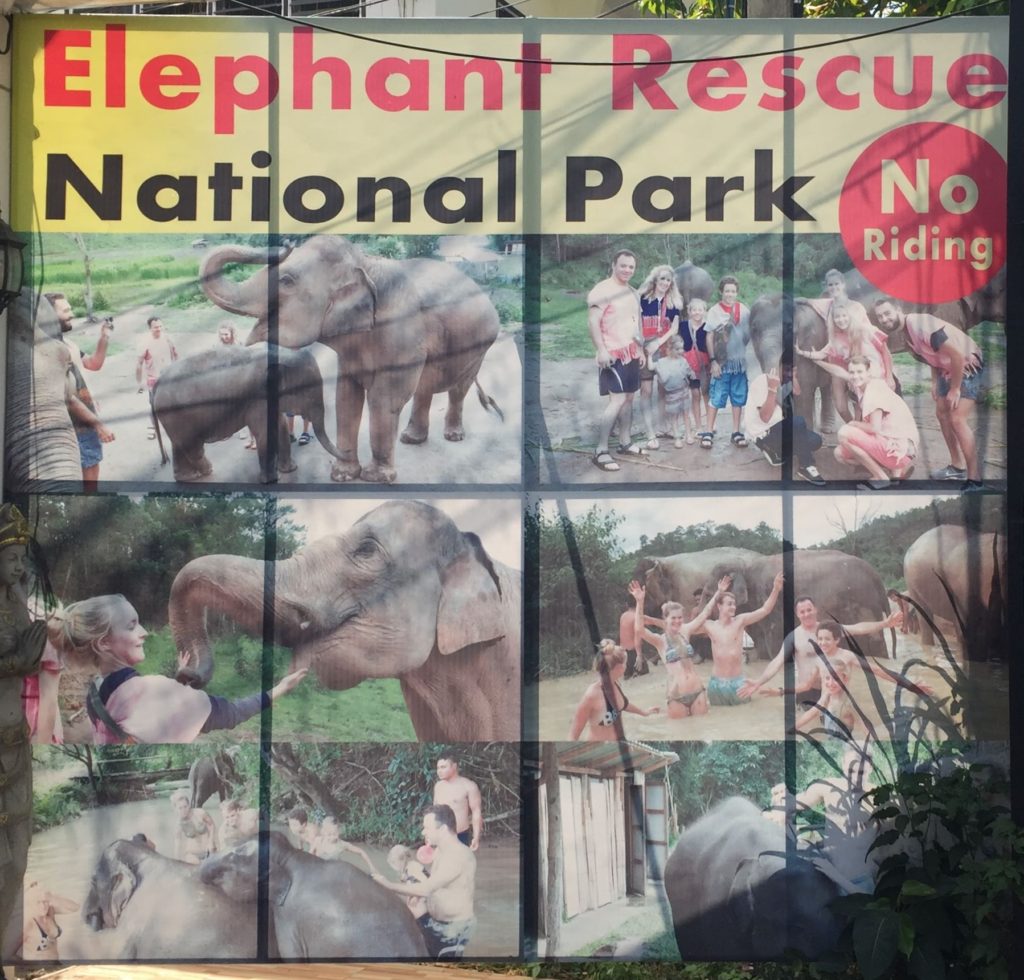
Why are there so many sanctuaries needed?
First of all, Asian elephants are an endangered species. There are approximately 2000 wild elephants in Thailand. After a logging ban in 1989, most logging elephants ended up in the tourism industry. In fact, 60% of Thailand’s elephants are captive elephants, and 60% of those are used for tourism. A prevalent argument for keeping these elephants in captivity is that there is not enough physical habitat to release them back into.
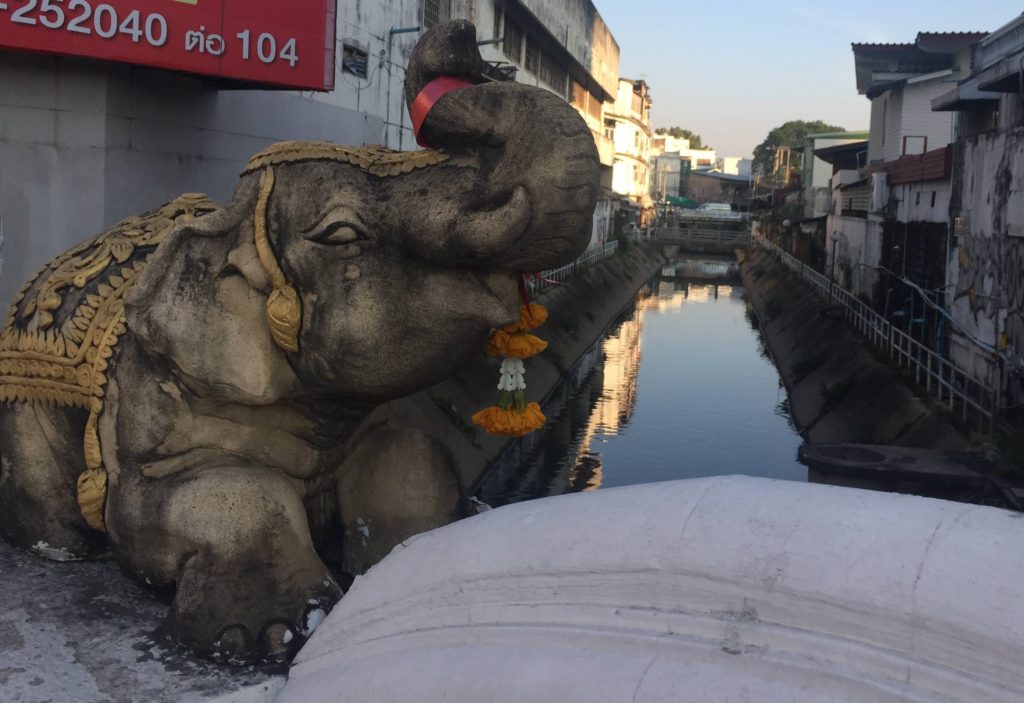
Advocates of this argument feel that elephants can tamper farmer fields or cause problems for local villages. In their view, tourism is the only sustainable method to combat those issues. However, while a large number of travel companies have committed to stopping all tickets sales to venues offering elephant rides and shows, there are still thousands of elephants being severely mistreated for the sake of tourism.
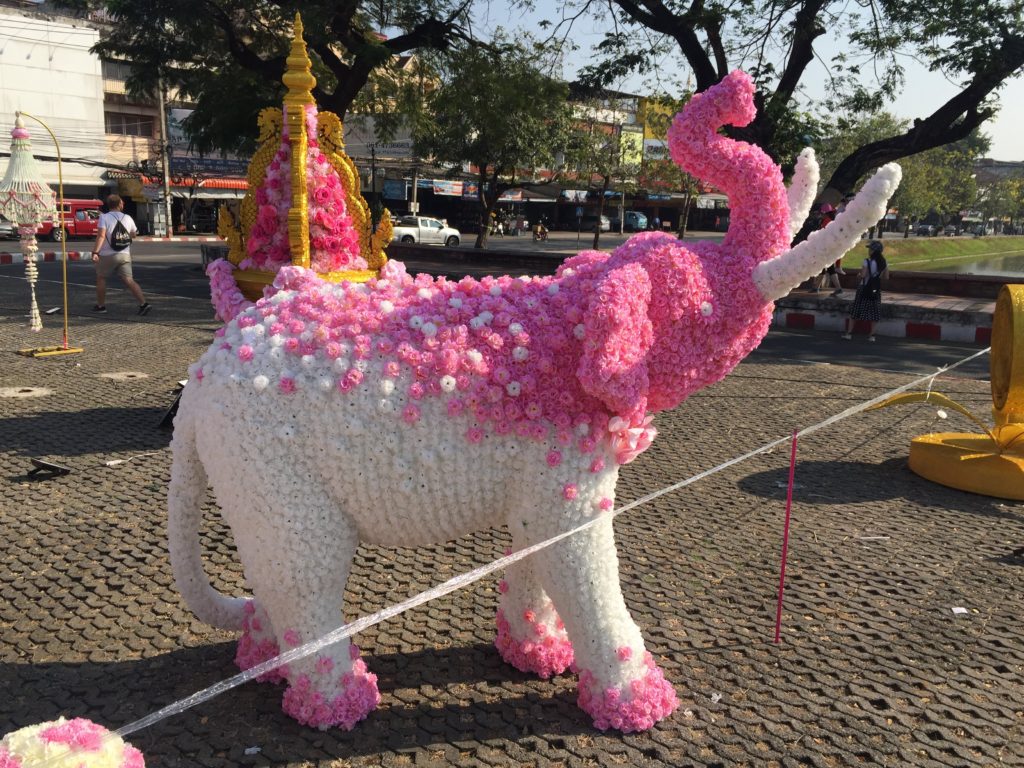
This ends up creating a perfect storm. Elephants need rescuing from awful conditions. Tourists are willing to fork over cold hard cash to interact with these elephants. The “sanctuaries” convince the tourists that bathing, feeding and hiking with elephants make the animals happy. Tourists are happy. Sanctuaries are happy (and richer). But it doesn’t sound like the elephants are happy.
Aren’t the elephants actually being rehabilitated to send back to the wild?
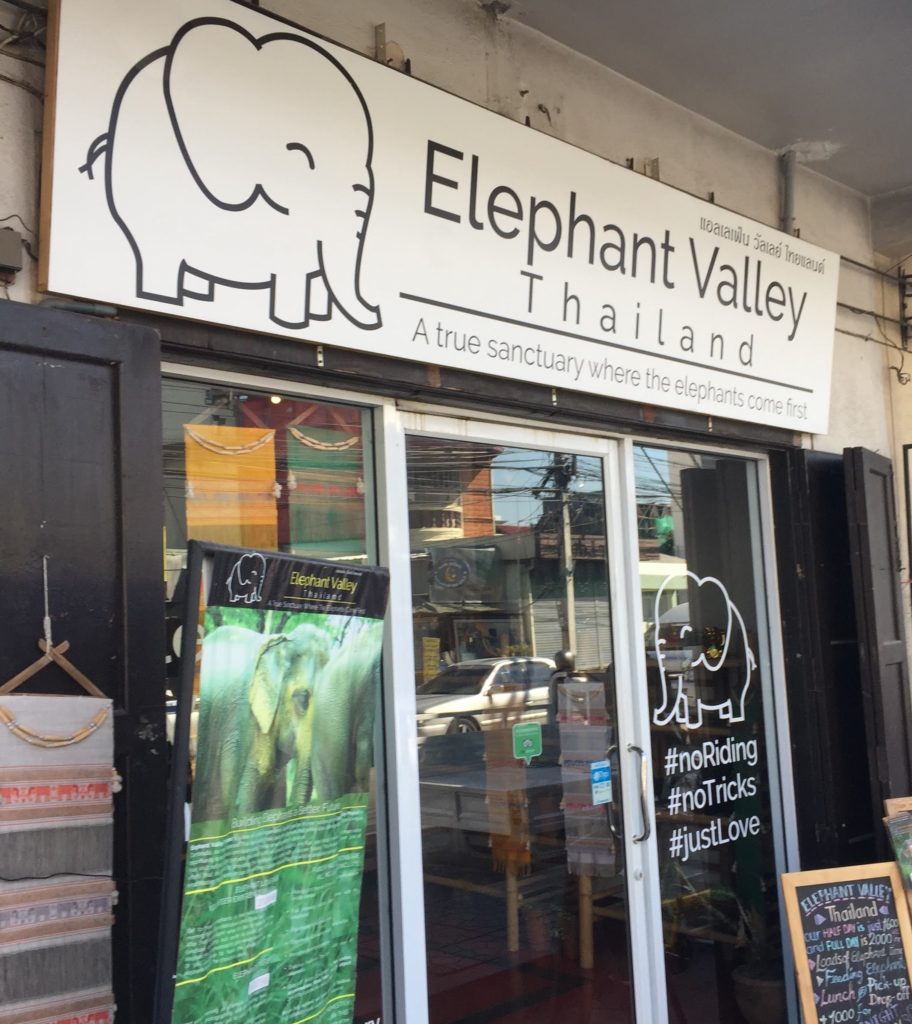
A sad truth is that some injured or old elephants are physically unable to be returned to the wild and must live in a conservation camp to be safe. A sadder truth is that many elephants that are capable of being returned to the wild are kept in “sanctuaries” instead, as it is much more profitable. The good news is, there are ethical conservation camps that gradually re-introduce the elephants to the wild. Click HERE to see the camps recognized as ethical by Responsible Travel.
How much space does an elephant actually need?
Wild Asian female elephants live in areas up to 100,000 acres, with their male counterparts living in areas up to 200,000 acres! Sadly, many elephants in the tourism industry are restricted to ½ acre or even 2 or 3 acres. They have been known to suffer extreme psychological damage in such confinement. Many sanctuaries have much bigger areas of up to 2700 acres. Although this is an improvement, it is nowhere near the natural space needed by a wild elephant.
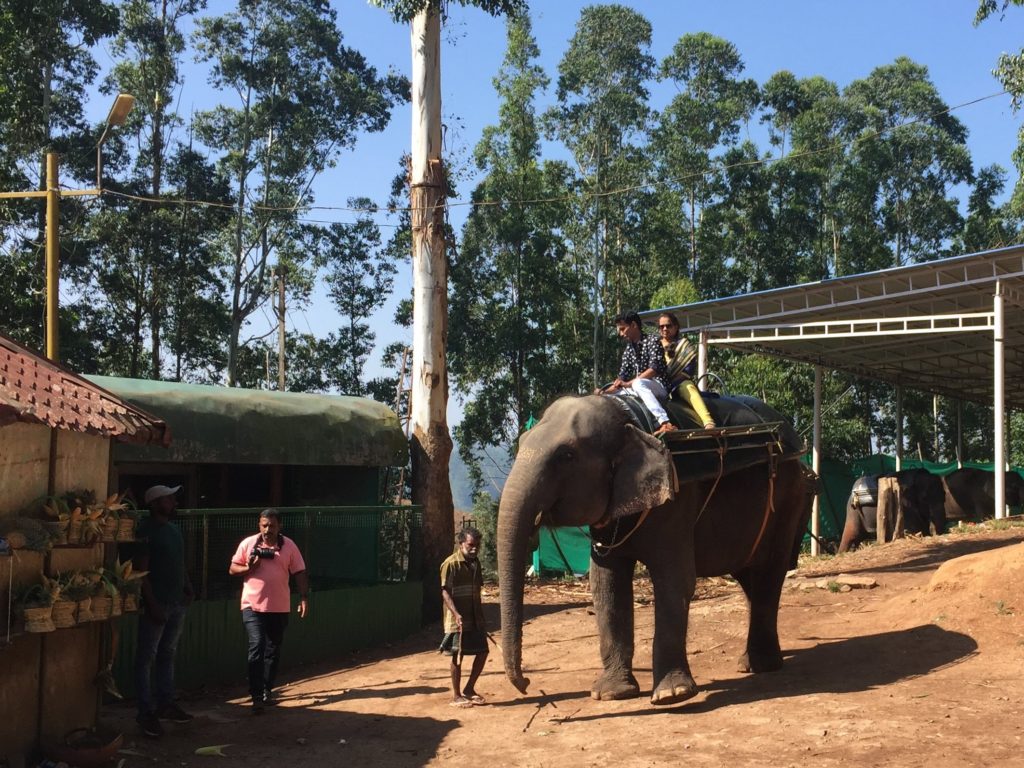
But the elephant sanctuary convinced me their camp was ethical!
Smart marketers bring in tourist dollars. There is no law to dictate how to use the word “sanctuary”. If a place is labelled as such, it does not necessarily mean it is ethical. From my research, I’ve learned that the only ethical way to interact with an elephant is from afar using binoculars and perhaps taking pictures, like you would on safari. Unfortunately, that means no bathing, trekking, feeding or riding.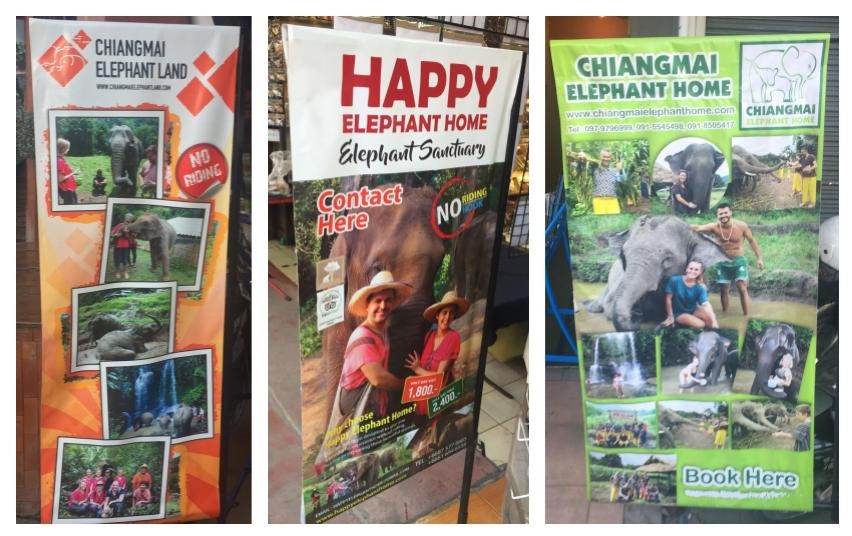
Are elephant sanctuaries ethical?
The short answer – most of them are not. The only way for an elephant to become domesticated enough not to injure humans during bathing or feeding is by “breaking its spirit” through rather harsh and cruel treatments. There have been numerous injuries and deaths to both elephant handlers and tourists due to unnatural human contact with these great animals. 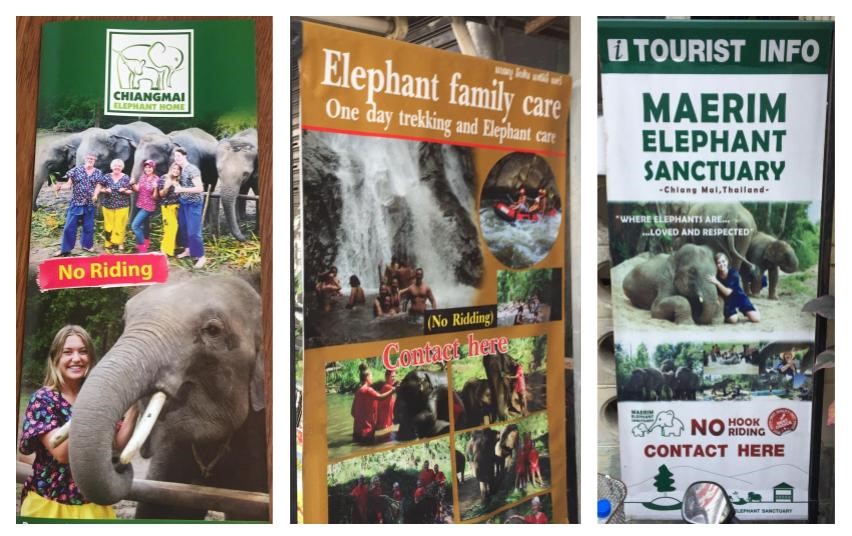 Humans bathing and feeding elephants is unnatural and dangerous for both parties, and should be treated as such. As stated earlier, the only way to ethically interact with an elephant is to view it from afar with no physical contact.
Humans bathing and feeding elephants is unnatural and dangerous for both parties, and should be treated as such. As stated earlier, the only way to ethically interact with an elephant is to view it from afar with no physical contact.
Conclusion
As one of the most popular tourist attractions in Thailand, I would imagine that many would be upset to learn that these businesses calling themselves sanctuaries are not what they appear to be. This post was not written as a way to shame or offend anybody who has visited a sanctuary. In fact, Shaleen has been to one of these elephant tourist parks in Thailand back in 2010.This post is merely to help raise awareness about the industry as a whole.
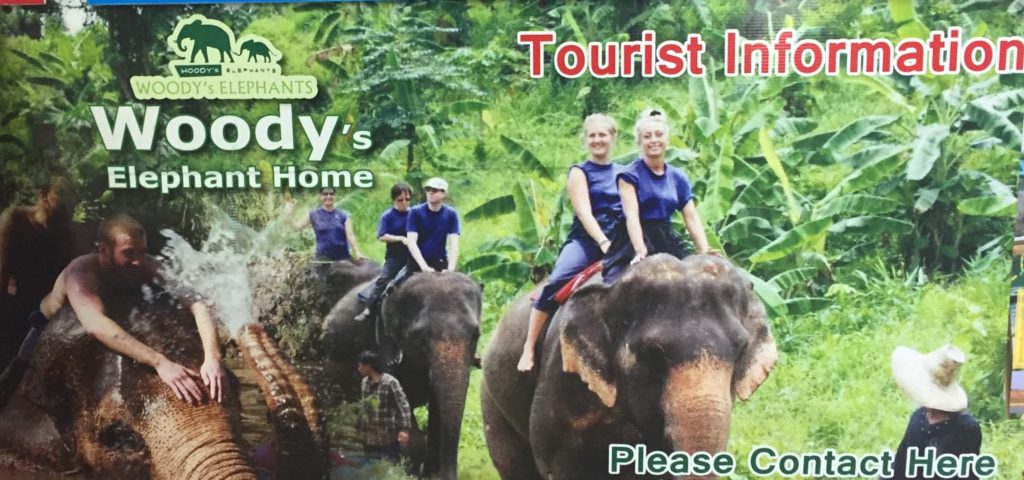
When researching, it broke my heart to read about many of the atrocities committed against these beautiful, intelligent creatures. However, there are many organizations doing excellent work in elephant conservation. They help to protect these endangered species from harm. I encourage you to visit the links below to learn more about elephants, and the elephant sanctuary industry. And we would wholeheartedly recommend going on safari – we visited Etosha National Park in Namibia in 2017 and were blown away seeing the elephants (from afar) playing and interacting with each other!
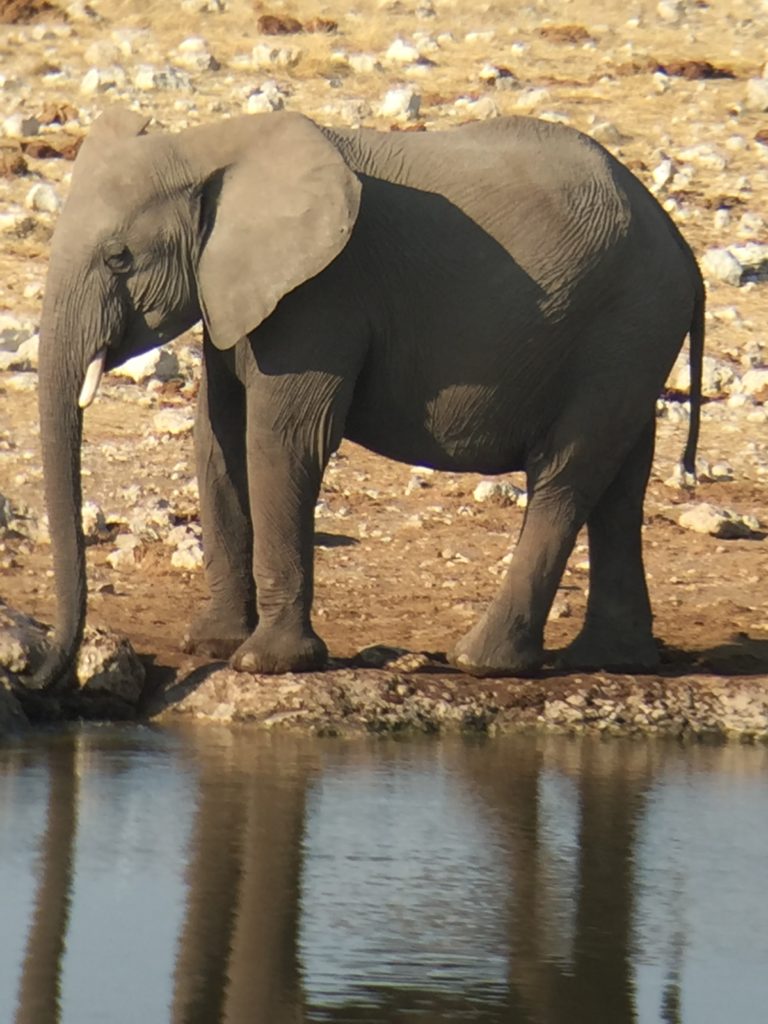
Where to learn more about elephants
To read more in depth information about elephants, sanctuaries and the ethics surrounding them, please refer to the sources below.
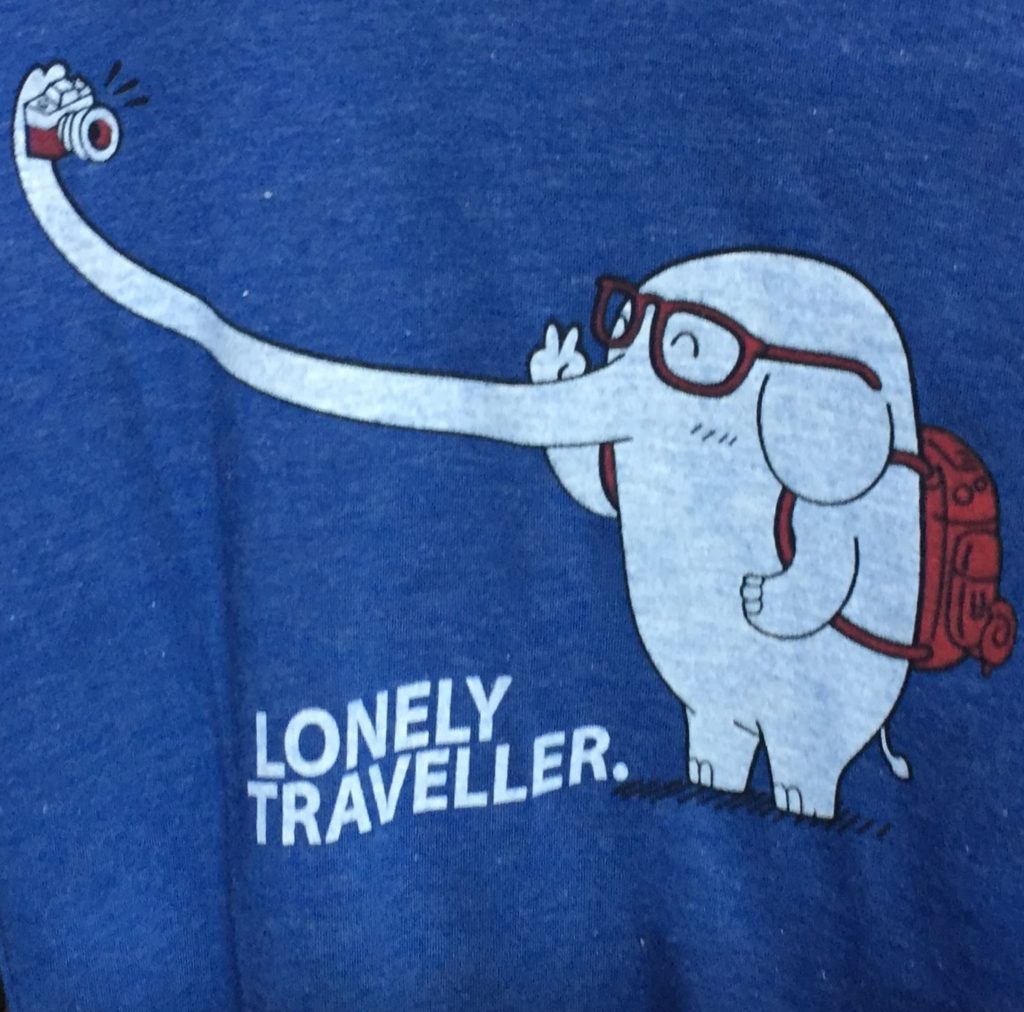
Also, the following podcast episode is incredibly interesting, informative, and heart-warming!
Stuff You Should Know
“Elephants: The Best Animals?” 14 February 2019.
Stuff Media LLC. <https://www.stuffyoushouldknow.com/podcasts/elephants-the-best-animals.htm> 16 February 2019
Sources:
‘https://www.bbc.com/news/science-environment-40501667
‘https://globalelephants.org/space-much-enough/
‘https://www.responsibletravel.com/holidays/elephant-conservation/travel-guide/elephant-sanctuaries-which-we-do-and-dont-support
‘https://www.amnh.org/explore/science-bulletins/bio/documentaries/wild-at-heart-the-plight-of-elephants-in-thailand/elephants-return-to-the-forest
‘https://www.theguardian.com/travel/2018/aug/11/how-ethical-is-the-elephant-sanctuary-youre-visiting
‘https://www.kohsamuisunset.com/elephants-in-thailand-need-to-know/
‘https://www.discoverwildlife.com/animal-facts/mammals/a-wild-future-ex-captive-elephants-in-thailand-are-being-given-a-new-start/
‘https://www.amnh.org/explore/science-bulletins/bio/documentaries/wild-at-heart-the-plight-of-elephants-in-thailand/elephants-return-to-the-forest
‘https://medium.com/@aydinadnan/what-they-dont-tell-you-about-elephant-sanctuaries-in-thailand-af3e4c9cb886
‘https://www.responsibletravel.com/holidays/elephant-conservation/travel-guide/elephant-sanctuaries-which-we-do-and-dont-support
‘https://www.stuffyoushouldknow.com/podcasts/elephants-the-best-animals.htm

Disclosure: Please note that this site may contain affiliate links to products. We may receive a small commission for purchases made through these links at no extra cost to you.

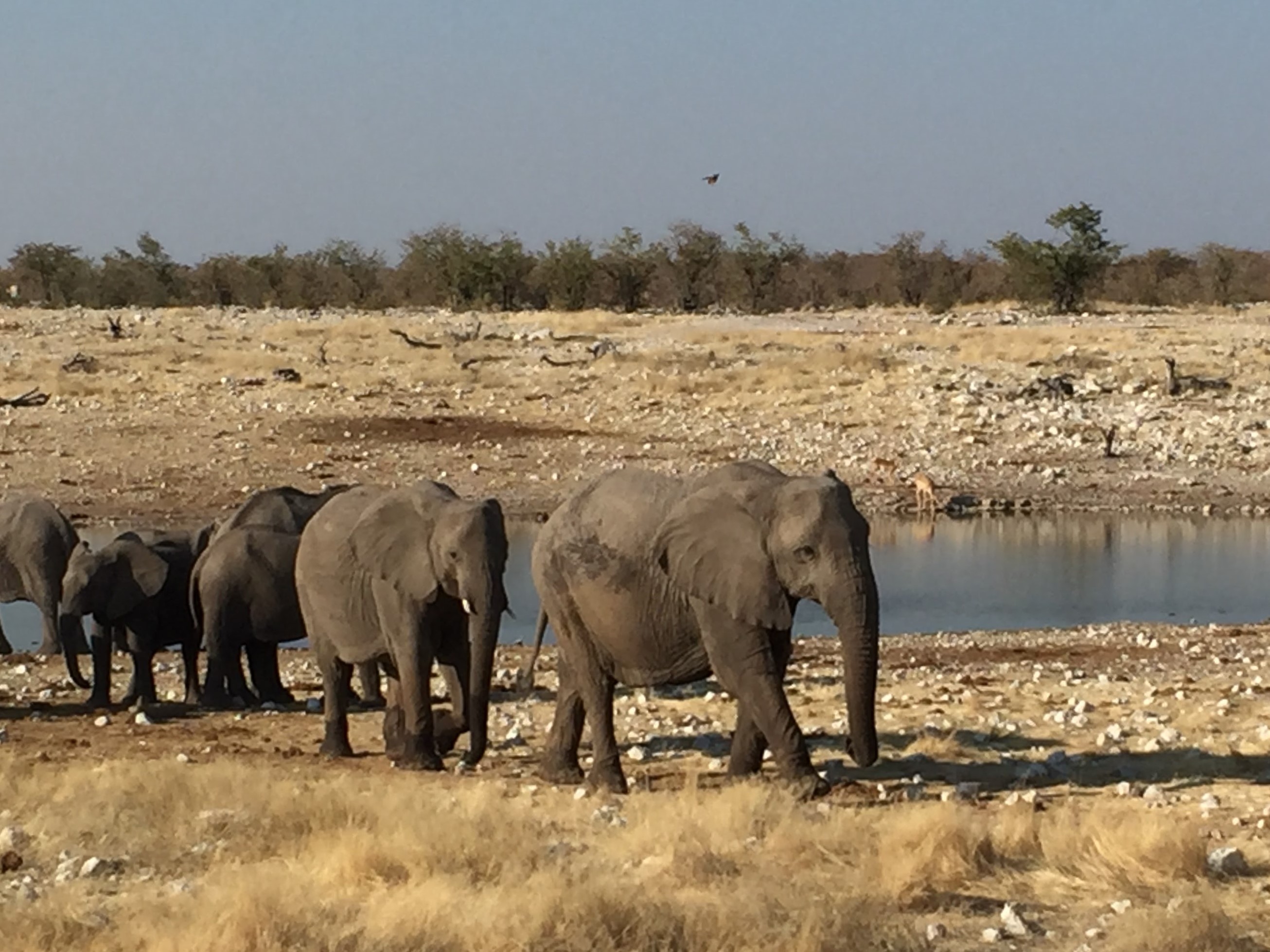
Excellent post, I saw these too all over Thailand and experienced the same thing. The same brochure would be advertising “ethical” tours and elephant-riding. So ridiculous.
Brilliant post. I’ve never visited Thailand myself, however, this also ponders my mind when friends and family visit. I really like how you’ve dissected further about ‘the sanctuaries’. From your experience what would you say the proportion of sanctuaries are ‘legit’?
Hi Alex. Thanks for the kind words and for reading this. Sadly, majority of the sanctuaries do not actually treat elephants ethically. The only way to do so is to avoid physical contact and observe them from afar. Check out Responsible Travel. They have a list of the sanctuaries they do and don’t support.
Like!! Really appreciate you sharing this blog post.Really thank you! Keep writing.